samedi, 01 mai 2021
Rethinking Chinese School of IR from the Perspective of Strategic Essentialism

Rethinking Chinese School of IR from the Perspective of Strategic Essentialism
As early as 1977 Stanley Hoffmann claimed that International Relations (IR) is an American social science (Hoffmann 1977), and according to Ann Tickner (2013), little has changed since then. Mainstream IR scholars perceive different regions of the world as test cases for their theories rather than as sources of theory in themselves. Thereby, the “non-West” became a domain that IR theorists perceived as backward; a domain which requires instruction in order to reach the “end of history” that Western modernity encapsulates (Fukuyama 1992). The phenomenon of American-centrism is closely related to the experience of the United States as a world hegemonic power after World War II. Although US hegemony has often been challenged by other countries in the world, its hegemonic status has never been replaced. Even if other countries looked like they would surpass the US at certain times (the Soviet Union in the 1970s, and Japan in the 1980s), they actually did not have the global, sustainable and all-round appeal of the American model. Therefore, American hegemony in the contemporary world not only enjoys technological, economic, and political superiority, but is also cultural, ideational and ideological.
However, any great power in history has its rise and fall, and the United States is no exception. The financial crisis in 2008, Brexit, the emergence of populism in Western countries, as well as the rise of non-Western countries, have challenged the current liberal order led by the United States. First of all, the stability of American society itself has been declining in recent years, especially under Trump’s administration. Racial divisions, coupled with other accumulated social and economic problems, have plunged the United States into serious trouble.
The COVID-19 pandemic that began in 2020 has weakened the West as a role model for governance and accelerated the transfer of power and influence from the West to the “rest.” In addition, the voice of developing countries and non-Western regions has become stronger in the past few decades as their wealth and power has increased. The combined nominal GDP of the BRICS countries, for instance, accounts for approximately one-quarter of the world’s total GDP. Some scholars have pointed out that the norms, institutions, and value systems promoted internationally by the West are disintegrating. The world is entering a “post-Western era” (Munich Security Report 2017).
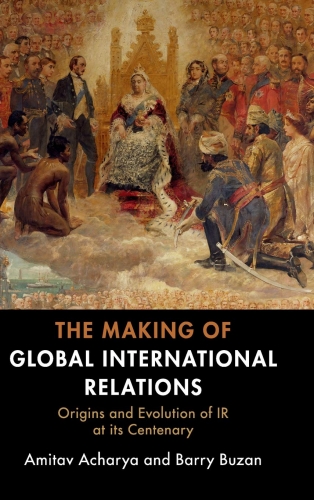

The views and experiences of non-Western subjects have increasingly been recognized as an indispensable part of the discipline, which is a consequence of the decline of the West and the wider dissemination of non-Western cultural and philosophical concepts. Various research agendas and appeals have been put forward around this theme. Among the most representative and influential are two initiatives: “Non-Western/Global IR” and “Post-Western IR.” Advocates of Non-Western/Global relations theory, such as Amitav Acharya and Barry Buzan, not only criticize the Western-centrism of the discipline, but also advocate the establishment of IR research based on the histories and cultures of other regions, and encourage the development of non-Western IR theories (See Acharya and Buzan 2010; 2019). The “World Beyond the West” research series (World Beyond the West), initiated by Ann Tickner, Ole Wæver, David Blaney and others, hope to present the local knowledge production practiced by multiple sites, so as to criticize Western-centrism in the discipline, and to respond to the political and ethical challenges faced by the discipline in the post-Western era. Both initiatives expect to develop diverse IR theories and concepts based on “non-Western” historical experience, thoughts and viewpoints.
The rise of interest in non-Western thought in the field of IR has had a positive significance for the development of Chinese IR theory. Many Chinese scholars believe that a Chinese School of IR should be established. For these advocates, Chinese IR not only needs to develop its own epistemological system to understand international relations from China’s perspective; it can also contribute to discussion of what kind of world order China wants. Qin Yaqing, one of the most representative advocates of the Chinese School, believes that the formation of the Chinese School is not only possible but also inevitable. As he states, the Chinese School has three sources of thought from which it can draw nourishment, namely: (1) the Tianxia concept and the practice of the tributary system, (2) modern communist revolutionary thought and practice, and (3) the experience of reform and opening up. Judging from the efforts of Chinese scholars in recent years, most of their efforts have focused on the use of Chinese history, culture and traditional philosophical ideas (Qin 2006). Among them, Yan Xuetong’s moral realism, Zhao Tingyang’s Tianxia system, and Qin Yaqing’s theory of relationality are most influential.

Yan’s moral realism tries to learn from the concept of “humane authority” in Chinese pre-Qin thought as a source of knowledge and ideas in order to reconceptualize the realist view of power. According to Yan, humane authority is not something that one can strive for; rather, it is acquired by winning the hearts of the people through setting an example of virtue and morality. In this vein, virtues and morality are qualities that can be inherent in the conduct of the state and its leaders, and which can influence others to act in one’s favor. It is the source of “political power”(See Yan, Bell and Sun 2011; Yan 2018). Zhao’s Tianxia system draws from an idealized version of the Tianxiasystem of the Zhou dynasty (c. 1046–256 BC) as the paradigmatic model. He argues that the system was an all-inclusive geographical, psychological, and institutional term. It therefore belongs to all humans equally and is more peace-driven than the Westphalian system which has dominated the world order for centuries (See Zhao 2006; Zhao and Tao 2019). Qin’s theory is centered around the concept of relationality, or guanxi, an idea that is embedded in Confucianism. From a Chinese relational perspective, the international society is not as simple as just comprising of independent entities acting in an egoistically rational way in response to the given structures. Instead, it is a complex web of relations made up of states related to one another in different ways (See Qin 2009; 2016; 2018).

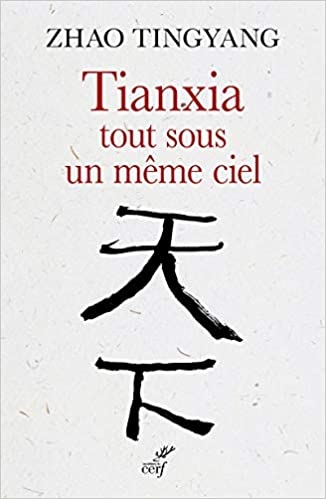
The nascent popularity of the Chinese School has received many criticisms in the IR subject area, the most important of which are the following two criticisms. The first argues that the Chinese School’s references to historical documents and classics are either inaccurate or overly romanticized. It is a kind of anachronism, which also infers an imperious form of Chinese exceptionalism – a form of wishful thinking that “China will be different from any other great power in its behavior or disposition” (Kim 2016). The second criticism is that the knowledge developed by Chinese School is only used to legitimize the rise of China. As Nele Noesselt (2015) notes, the search for a Chinese paradigm of IR mainly aims “to safeguard China’s national interests and to legitimize the one-party system.” The above two criticisms are valid, but not unique to China, and by this standard much other work in IR would also have to be discounted. American IR scholarship also uses source material anachronistically, as critics of realism have observed, and its agenda often reflects US interests and concerns. As E.H. Carr noted in his letter to Hoffman in 1977, “What is this thing called international relations in the “English speaking countries” other than the “study” about how to “run the world from positions of strength”?…[it] was little more than a rationalization for the exercise of power by the dominant nations over the weak” (Carr 2016: xxix).
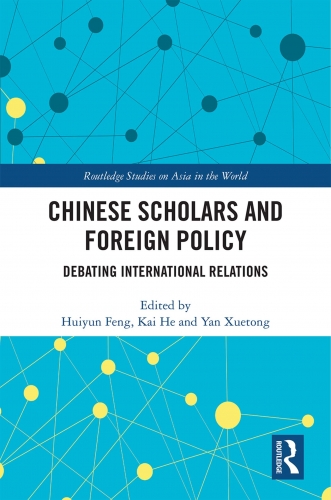
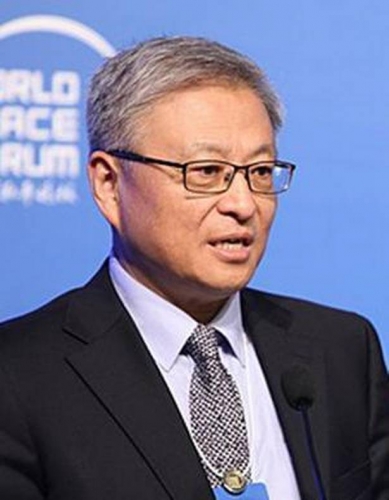
Yan Xuetong
Of course, making comparisons between American hegemony and its connection to mainstream IR on the one hand, and the rise of China with the Chinese School on the other, does not by itself justify the enterprise of the Chinese School from the critical IR perspective.
It is worth mentioning that on various occasions critics like Callahan (2008) have been cautious about the Chinese School as merely another familiar hegemonic design. To some extent, Chinese School scholars are indeed replicating the mainstream western IR theory and its problems (Chen 2010). Attempts by Yan, Zhao and Qin to reinvigorate traditional Chinese concepts – i.e. humane authority, the Tianxia system, and relationality – actually channel the Chinese Schools of IR into American mainstream IR discourse – i.e. a realist notion of power, a liberal logic of cosmopolitanism, and a constructivist idea of relationality. The Chinese School uses, against the West, concepts and themes that mainstream IR currently uses against the non-Western world. As Shani (2008) points out, true post-Western theories should not only mimic modern Western discourse; they must develop a critical discourse from within non-Western traditions, liberating non-Western regions from Western dominance. However, one might ask: is it possible that imitating Western discourse can constitute a kind of critical resistance? In order to think about this issue, it is worth looking at Bhabha’s concept of “mimicry.”
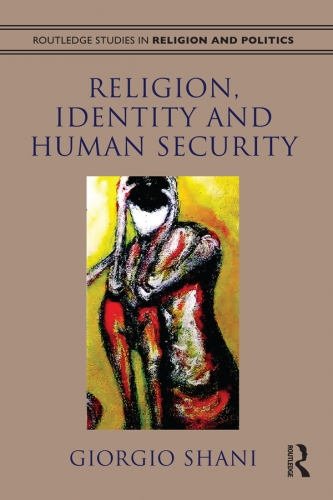
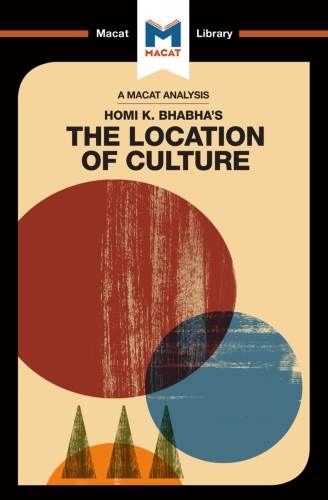
For Bhabha, “mimicry” is a complex, ambiguous, and contradictory form of representation, and it is constantly producing difference/différance and transcendence. As Bhabha notes (1994: 86), “the discourse of mimicry is constructed around an ambivalence: in order to be effective, mimicry must continually produce its slippage, it excess, its difference.” As a result, imitation by the Chinese School is not simply to duplicate the Western discourse, but to change Western concepts and practices to bring them more into line with Chinese local conditions. “Almost the same, but not quite.” Thus, non-Western scholars including the Chinese School can still make novel and innovative contributions to the literature of IR through hybridization, mimicry and the modification of the initial notions, as Turton and Freire (2016) note. More importantly, this mimicry is a concealed and destructive form of resistance in the anti-colonial strategy. Firstly, imitating the West will create similarities between non-Western theories and Western theories, which in turn confuses the identity of the West. Moreover, the relationship between the “enunciator” and the one who is articulated can potentially be reversed. Whether in support or in opposition, mainstream IR scholarship has been forced to respond to various ideas, concepts and approaches proposed by Chinese School scholars. Thirdly, the Chinese School also verifies that the European experience is a local experience. This is readily exposed when the starting points of mainstream IR – often taken for granted – are used in different contexts.
Nevertheless, there seems to be an issue at the heart of the enterprises of the Chinese School from Bhabha’s colonial resistance perspective. To Bhabha (1994: 37), “hierarchical claims to the inherent originality or ‘purity’ of cultures are untenable, even before we resort to empirical historical instances that demonstrate their hybridity.” Undeniably, the Chinese School has manifested several degrees of essentialism in its account of Chinese history and political thoughts, believing that Chinese culture have a homogenous, nonmalleable, and deep-rooted essence. It has indeed juxtaposed China and the West, essentializing and fixating on the existence of “Chinese culture,” which in nature is hybrid. When Orientalist IR meets Occidentalist IR, hatred and conflict will become possible and perpetuate questionable practices in world politics. In that context, the enterprise of the Chinese School might close down the creative space needed to imagine a different way of engagement. Essentialism is something of a taboo in the critical line of IR scholarship. However, when critical theory’s criticism of essentialism is too extreme, it may threaten the base on which resistance depends. In order to meaningfully challenge the hegemony, we need a site of agency, or a subject. A theoretical difficulty derived from this point of view is the extent to which a degree of essentialism is desirable.
To Spivak, essentialism is the object to be deconstructed, however, deconstruction depends on essentialism. As she stated (1990: 11), “I think it’s absolutely on target to take a stand against the discourse of essentialism…But strategically, we cannot.” On the issue of feminism, Spivak opposes the so-called feminine nature. She believes that it is practically impossible to define “women.” An implication of defining women is the creation of a strict binary opposition, a dualistic view of gender, and as a deconstructionist, she is against positing such dualistic notions. Although she opposes defining an absolute and fixed nature of women, from the standpoint of political struggle, she believes that the historical and concrete nature of women still exists and can be used as a weapon of struggle. In light of Spivak’s thought, it is inevitable to adhere to essentialism to a certain extent when engaging in post-Western theories, although we must be vigilant. In other words, the Chinese School as a “strategy” is not permanent but is specific to the situation of non-Western voices needing to be heard on the global stage, noting that the main challenge in the IR discipline today is to address the legacy of “Western hegemony.”
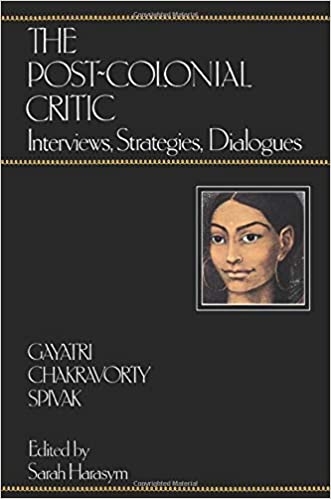
To conclude, the rise of the Chinese School has stimulated discussions, ignited debates, and sparked inspiration among IR scholars. It has challenged Western hegemony within international relations as well as the study of it. As pointed out at the inception of this article, the field of IR theory has been highly Eurocentric to date and international relations are dominated by the Western hegemony. Hence, there is no need to discard Chinese School perspectives altogether. Rather, we need to use the Chinese School strategically and critically, rather than treating them as purely objective standpoints that produce truths. IR knowledge of all sorts needs to be produced with a reflective spirit.
References:
Acharya, A., & Buzan, B. (2010). Non-Western international relations theory : Perspectives on and beyond Asia. London ; New York: Routledge.
Acharya, Amitav & Buzan, Barry. (2019). The Making of Global International Relations. Cambridge: Cambridge University Press.
Bhabha, Homi (1994). The location of culture. London [etc.]: Routledge.
Callahan, William A. (2008). Chinese Visions of World Order: Post-Hegemonic or a New Hegemony? International Studies Review, 10(4), 749-761.
Carr, Edward H. (1939/2016). The twenty years’ crisis, 1919-1939 : An introduction to the study of international relations. London: Macmillan.
Chen, Ching-Chang. (2011). The absence of non-western IR theory in Asia reconsidered. International Relations of the Asia-Pacific, 11(1), 1-23.
Fukuyama, F. (1992). The end of history and the last man. New York, NY [etc.]: Free Press [etc.].
Hoffmann, S., An American social science: International relations. Daedalus, 106 (1977), pp. 41-60.
Kim, Hun Joon. (2016). Will IR Theory with Chinese Characteristics be a Powerful Alternative? The Chinese Journal of International Politics, 9(1), 59-79.
Munich Security Report (2017). Post truth, post West, post order? Munich Security Report 2017. https://issat.dcaf.ch/Learn/Resource-Library/Policy-and-R...
Noesselt, Nele. (2015). Revisiting the Debate on Constructing a Theory of International Relations with Chinese Characteristics. The China Quarterly (London), 222(222), 430-448.
Qin, Yaqing. (2006). The possibility and necessity of a Chinese School of international relations theory (in Chinese), World Economics and Politics, 2006:3, pp.7-13.
Qin, Yaqing. (2016) A relational theory of world politics’, International Studies Review, 18:1, pp.33–47.
Qin, Yaqing. (2018). A Relational Theory of World Politics. Cambridge University Press.
Shani, Giorgio. (2008). Toward a Post-Western IR: The “Umma,” “Khalsa Panth,” and Critical International Relations Theory. International Studies Review, 10(4), 722-734.
Tickner, Arlene B. (2013) ‘Core, Periphery and (Neo)imperialist International Relations’, European Journal of International Relations, 19:3, pp. 627-646.
Turton, Helen Louise, & Freire, Lucas G. (2016). Peripheral possibilities: Revealing originality and encouraging dialogue through a reconsideration of ‘marginal’ IR scholarship. Journal of International Relations and Development, 19(4), 534-557.
Spivak, G., & Harasym, S. (1990). The post-colonial critic : Interviews, strategies, dialogues. New York, NY [etc.]: Routledge.
Worlding Beyond the West: https://www.routledge.com/Worlding-Beyond-the-West/book-s....
Yan, Xuetong, Bell, Daniel A, Zhe, Sun, & Ryden, Edmund. (2013). Ancient Chinese thought, modern Chinese power (The Princeton-China Series). Princeton: Princeton University Press.
Yan Xuetong. (2019). Leadership and the Rise of Great Powers (Vol. 1, The Princeton-China Series). Princeton: Princeton University Press.
Zhao, Tingyang. (2006). Rethinking Empire from a Chinese Concept ‘All-under-Heaven’ (Tian-xia, ). Social Identities, 12(1), 29-41.
Zhao, T., & Tao, L. (2019). Redefining a philosophy for world governance (Palgrave pivot).
14:15 Publié dans Actualité, Géopolitique | Lien permanent | Commentaires (0) | Tags : chine, relations internationales, théorie politique, politologie, sciences politiques, philosophie politique, asie, affairesasiatiques, géopolitique |  |
|  del.icio.us |
del.icio.us |  |
|  Digg |
Digg | ![]() Facebook
Facebook




Les commentaires sont fermés.